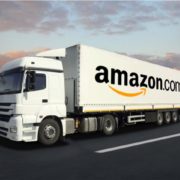30,000 ft View of Amazon’s Prime Day
Each year Amazon says their Prime Day shopping holiday held in July is their biggest sales day(s) of the year and 2019’s initial stats are in line with that statement.
Since Prime Day’s debut in 2015, projected global sales have grown significantly each year in Amazon’s top domestic and international markets.
Some of the leading product categories from Prime Day 2019 were laptops, televisions, headphones, luxury & beauty products, pet products, household cleaning supplies and over one million toys. Projections are that Prime members all over the world purchased over 175 million items in 2 days.
Amazon Prime Day Sales Recap
| Projected Global Sales (in $billions) | Percentage of Sales Domestic vs. International | |
| 2015 | $0.9 B | 78% Domestic / 22% Intl’ |
| 2016 | $1.52 B | 76% Domestic/ 24% Intl’ |
| 2017 | $2.41 B | 66% Domestic/ 34% Intl’ |
| 2018 | $4.19 B | 58% Domestic/ 42% Intl’ |
| 2019 | $5.8 B | Awaiting figures |
Two large factors contributing to significant year over year sales growth for Prime Day are longer time for the actual sales event and more countries are included than ever before.
Prime Day was typically held for 30 hours and in 2018 was extended to 36 hours; now in 2019 it is a 48 hour sales holiday with new deals posting every 5 minutes in an effort to keep shoppers coming back to the marketplace.
Over 18 countries are included which is double the number from 2015; Prime membership overseas is also growing consistently in top markets like the UK, Mexico, Australia and India.
Amazon’s goal with Prime Day isn’t just to make Billions of dollars in a short period of time. They use that intense volume to test their capacity, changes in their network, investments to their in-house transportation and logistics and growing their Prime membership base.
It is estimated that roughly 53% of U.S. households have a Prime membership and Prime Day is one of the best events for Amazon to grow that loyal customer base and profitable annual dues.
The Prime Membership charge is $119 per year with students paying a discounted fee of $59 per year and plans are also offered on a monthly charge. Revenue from Prime membership fees is estimated to bring Amazon roughly $12 Billion this year and the perks associated with Prime Membership are expected to improve significantly so Amazon can grow their customer base beyond its already titanic size.






